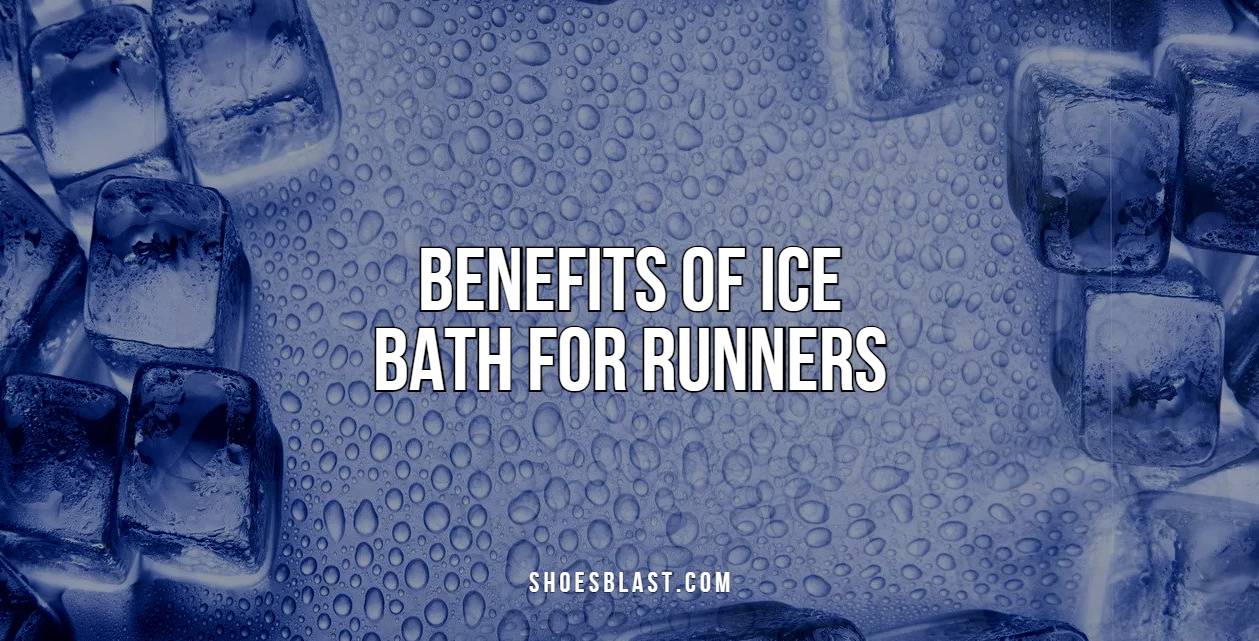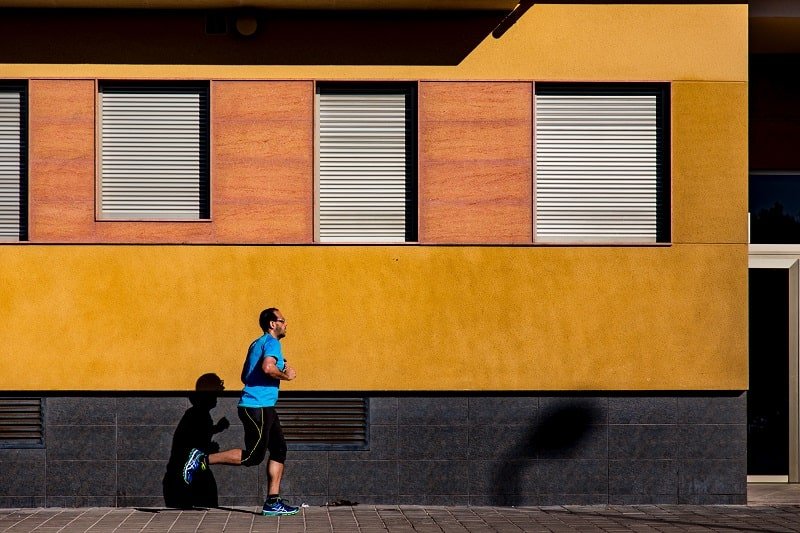The ice bath now becomes the craze for all enthusiastic athletes. Most runners are using cold exposure right after their scheduled running as a tool to speed up recovery or improve performance.
What is Ice Bath Therapy or Cryotherapy?
The idea behind ice therapy or cryotherapy is that it will reduce inflammation by improving blood circulation and helps to overthrow muscle soreness and pain. It also activates cold shock proteins of the human body, that’s actually like you are allowing the stress of your body to go in the ice.
General Guidelines for taking Ice Bath:
Ice bath sounds so overwhelming but one should take precautions before getting into them. For beginners, It’s not recommended to go for an ice bath until your body builds the ability to stay in cooler temperatures.
According to the research you need to submerge your body up to the neck in water between 10 and 15 degrees Celsius and for long enough to ensure a core body temperature drop of at least 2 degrees Fahrenheit which should take about 5 minutes or more to achieve the target.
It’s recommended to go to a facility with trained professionals and try to sit in the tub of ice water for 3 minutes at least. While a lot of people know the basic information, it’s a “very challenging” situation that can be aided with the help of a coach.
Concept Behind Ice Baths as a Recovery Method for Runners
There are a huge amount of recovery protocols and methods on the market, like massage compression outfits, electro-muscular stimulation, and saunas, ice bath, each of these protocols try and tackle recovery in a slightly different way.
Ice bath or cryotherapy is considered as one of the traditional methods of recovery sworn by several athletes or coaches throughout the year. To understand how this traditional recovery method works, we need to first look at what’s actually happening to our bodies when we sit in a bath of ice-cold water.
- Initially, the change in temperature against your skin contract those small capillaries that are close to the skin within our skeletal muscle, and this certainly reduces the volume of blood flow as a result your skin will probably go a bit whiter or lighter.
- Cold water immersion reduces the blood flow in the part of the body that’s close to the surface, by protecting the essential organs and your core inside while maintaining that stable inner temperature of your body.
- Sudden reduction of blood volume from the skin and from the muscles aids in the removal of any waste products that might have been within that blood or in that area as well.
- Also, it also helps with the drainage of the lymphatic system, which can reduce inflammation and remove waste products there.
- When you get out of the cold water the reverse happens, the increase in temperature around your skin starts refilling the capillaries with fresh oxygenated blood and as a result, your skin will go pink and flush looking.
- Fresh oxygenated blood will help the circulation of blood in your body and that’s how the ice bath recovery method works because it removes the waste products and brings fresh blood back to your body.
Benefits of Ice Bath for Runners
One might be wondering what the potential benefits of an ice bath are and whether it has any worth for subjecting your body to extreme cold.
Indeed.
The good news is that there are many potential benefits of using an ice bath, especially for people who work out or runners and athletes practicing for competitive performances.
1. Fight or Flight instinct
Ice baths are considered an intentional stressor for runners. It’s an opportunity to override your autonomic nervous system, which means your fight-or-flight instinct goes off in the cold and by practice or training, you can control that fight-or-flight response. After taking an ice bath, athletes get hit with a massive dose of dopamine and norepinephrine.
2. Ice Baths are a Placebo
Athletes use ice baths as recovery tools. Post-workout sessions of ice bath may ease the soreness of muscles and helps in reducing inflammation by reducing the blood flow in the capillaries or blood vessels. Also, some studies have even suggested that ice baths are a placebo.
3. Ice Baths After Strenuous Workouts
Some studies observed positive outcomes for creatine kinase, an enzyme that is released into the bloodstream when muscle cells are damaged after a high-intensity exercise or run.
4. Treatment of Heat Stroke
You may not surprise to know that, it’s common to have tubs filled with ice on the side-lines of marathons.
For runners who get their core body temperature above 105, 106, and 107 while running and need to bring down their core temperature very quickly, ice baths can be used to cool your body down very fast. In some cases, this can be lifesaving. Historically, ice baths are used as a treatment for heat strokes.
5. Ice Baths for Meditation
People sometimes claim that ice bath helps them with maintaining focus. Also, people take ice baths post-workout meditation, so it helps them to keep their focus on recovery and slower heart rate.
6. Better Sleep
Ice baths may help you feel more relaxed as the cold water exposure let your brain alleviate all the stress. So after getting an ice bath, you just feel rested and experience a sound and peaceful sleep.
How Does Ice Bath Therapy Work?
There is conflicting research on it whether ice bath therapy is suited for runners’ training. Let’s put it this way,
When it comes to any kind of athletic progress, where you want to gain muscle or you want to run that bolt or workout, you need to do two things to make a progress.
First, stimulate your body through training and then recover from that training. Athletes are required to maintain the balance between activity and timely recovery from injuries hence, they go for the toe-numbing practice of taking ice baths to reduce the inflammation and consequent soreness. It helps them to tackle the next activity with greater ease.
How to Take an Ice Bath Safely at Home?
In order to take an ice bath at home, you will need a bathtub or an immersion tub, water, ice, and a thermometer. Before you start, make sure whatever (tub) you’re using, you can safely get in and out of it.
- Fill the tub with cold water, the temperature of the water is about 60 degrees Fahrenheit and make sure to have ice bags with you to avoid any hassle. Now get in the tub full of ice water; it will activate your instinct of excelling parasympathetic sense.
- Calm down and take a breath i.e: nose breathing. Avoid inhaling too much air as this will activate your sympathetic sense and in reaction, you will contract your muscles.
- Use a thermometer to measure and maintain the water temperature as it is so important. If the water gets too cold, it will increase the risk of causing damage to the skin or tissues. Soaking your body for about five minutes should not go any longer than 10 minutes and the water should not get any colder than 60 degrees Fahrenheit or 15.5 degrees Celsius.
- Perform a little breathing trick which is the box breathing in which you take an inhale hold exhale hold by focusing on the breathing pattern. This exercise will help you to excel in parasympathetic sense development.
- Press the pressure point on your head, again and again, to keep the brain aware that your body feels alright. And remember, whenever take an ice bath keep in your mind that you are going to fight like freeze for a reason.
The intensity of using ice bath therapy
An athlete typically takes an ice bath after an intense workout to control the inflammation and regulate the blood circulation of the body. The intensity of using ice bath therapy should be once or twice a week.
However, the long-term benefit of reducing acute inflammation post-training is also questionable. Acute inflammation is a necessary part of the musculoskeletal repair process, so if cold water immersion is part of an athlete’s regular post-training regime, the long-term adaptations and muscle growth can be negatively affected by curbing these natural biological processes.
Multiple medium-term studies show that athletes face adverse effects of consistent and continuous cold water immersion. It seems that ice baths may be a useful tool during multi-event competitions but not consistently after everyday training.
What to Avoid After Taking an Ice Bath
Don’t get into warm water right after taking an ice bath. It’s better to let the body warm up on its own instead of staggering it with warm water. If the body is unable to get warm on its own or back to normal temperature, take a warm shower to raise your internal body temperature.
Recommendations
It is also recommended that anyone with serious health concerns, like strokes or heart disease, shouldn’t do ice baths. Also, one of the studies reveals that the best routine for athletes to take an ice bath was 11 to 15 minutes of immersion at a temperature between 52 and 60 degrees Fahrenheit (11 to 15 degrees Celsius). And this should be enough time to get the benefit and avoid the risks.

Mahwish Hafeez is a freelance content writer, and a researcher. Her area of expertise includes blog writing, article writing and research work based on different aspects of social, health, Accounts and Finance and digital content



